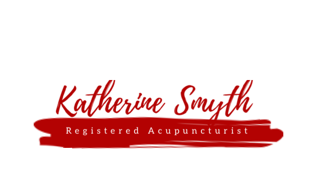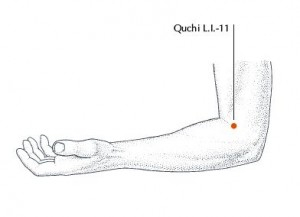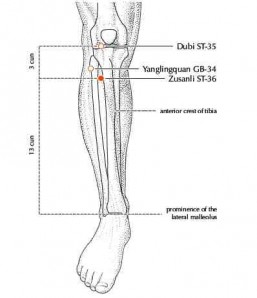It’s that time of year once more. The frightful cold and influenza season. Did you realize that acupuncture can help avert the colds and influenza? Acupuncture is preventive medicine; it can reinforce and offset our bodies with the goal that we can stay away from illness instead of managing it after it happens. The basic cold and influenza (flu) can happen within any time of the year, however is most pervasive among the fall and winter months. Common indications are headaches, coughing, stuffy and running nose and body aches and pains.
Preventative activity is the best approach to everything and Traditional Chinese Medicine (TCM) is the same. Patients will benefit significantly more from being treated before the onset of flu signs. Regardless, if you start to show indications of a cold or flu, then early action is the best approach to practical treatment. The sooner treatment is obtained for flu & cold like condition the quicker and more effective acupuncture is.
The accompanying acupressure points reinforces our immune system and will enhance your chances of avoiding the flu and cold this season. In the event that you’ve develop symptoms of the cold virus, these four points will help keep prevent a recurrence.
Between your normal acupuncture treatments you can press on these four points to help you stay healthy through this season’s cold and flu. Additionally you can perform these points on children or family members who are in additional need of immunity support.
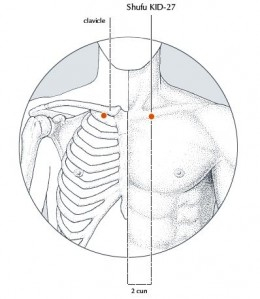 Kidney 27
Kidney 27
Kidney 27 is a super star for immune boosting, and particularly supportive for individuals who are inclined to upper respiratory infections. The Kidney framework is said to grasp Lung Qi, significance it aids in the air distribution of lungs throughout the body. At the point when this interchange doesn’t happen accurately, shortness of breath and coughing can happen. Exhaustion and fatigue can set in because your body is not being appropriately oxygenated. Kidney 27 is easily accessible, locate about one inch from the midline of the lower border of the collarbone
Called a fever-diminishing point, Large Intestine 11 likewise is utilized preventively for colds and flus, and other immune compromising conditions. The location of this point is determined by the most sensitive spot in this area. The sensitive spot is typically the best when pressed or needled. Large Intestine 11 is located at the lateral (thumb side) of the elbow crease.
Lung 7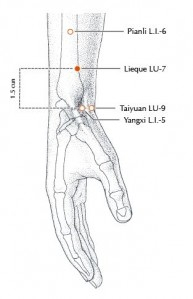
Make a thumbs-up sign. When you do that, you’ll see a depression at the base of your thumb (the anatomical snuffbox). From that depression, Lung 7 is placed roughly two finger widths up your arm. This acupuncture point is useful for reinforcing your body’s defensive Qi (energy), serving to keep your immune system healthy. Lung 7 is a frequently used point for coughing, sniffling, headaches and stiff neck.
Stomach 36 is called ‘long life’ point and is the most effective point for strengthening the immune system, treating fatigue and weakness in the body. Stomach 36 found about a hand length below the patella of the knee, just outside the prominent tibia bone. Pressing this point will deliver a solid sensation that goes down the leg.
Instructions to Do the Routine
Here are a couple of snappy tips on performing acupressure on these points:
Before performing these pressure point, get into a comfortable position from which you can access each of these points.
Start with Kidney 27 and work your way down the body. Thus, the order will be Kidney 27, Large Intestine 11, Lung 7, and Stomach 36.
For Kidney 27 and Stomach 36, since you have both hands free, press the point on both sides of the body at the same time.
For Lung 7 and Large Intestine 11, pressing the point on each one side of the body to figure out if one side is more sensitive than the other. In the event that both are just as sensitive (or not in any manner), you can pick either, or alternate pressing the points on both sides.
Use 30 seconds on each one point. Apply firm weight while breathing deeply into your stomach area. You’ll likely discover this routine exceptionally relaxes you; so don’t hesitate to repeat as needed.
As maintenance, try doing the two-minute routine once in the morning and once in the evening. In the event that you begin feeling exhausted, fatigue or like you may be catching something, to this routine up it to three times each da



